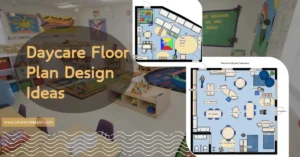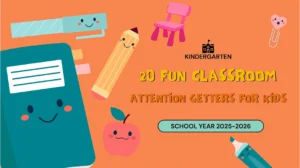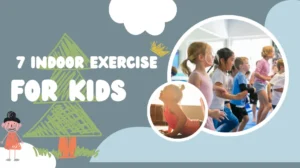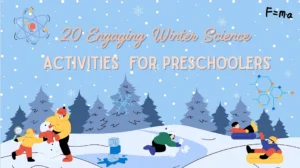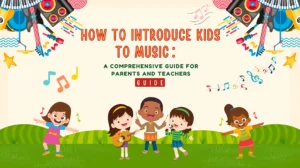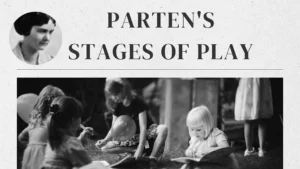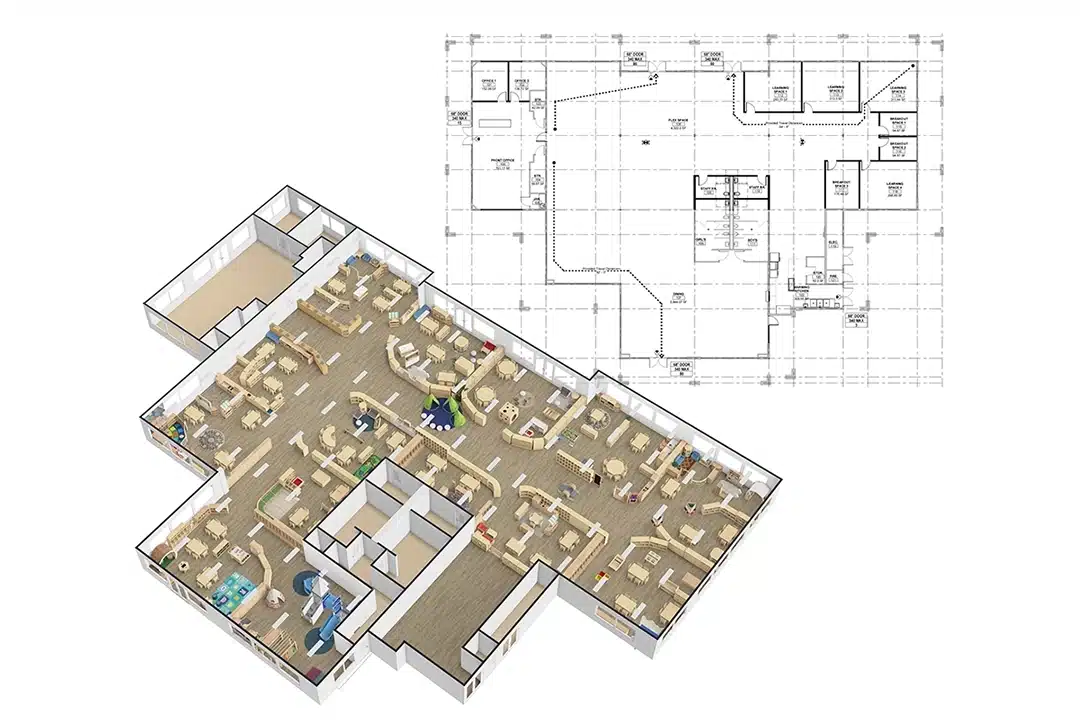Are you wondering how to support your preschooler’s reading and language development in a way that’s both fun and effective? Do traditional flashcards or worksheets seem too dull or overwhelming for young learners? With attention spans often short and interests rapidly changing, it’s not always easy to find literacy activities for preschoolers that are both educational and entertaining.
Literacy activities for preschoolers encompass games, songs, crafts, and hands-on exercises that naturally foster a love for language and learning. These interactive, play-based experiences help young children develop critical early literacy skills such as phonological awareness, vocabulary, letter recognition, and emergent writing. Unlike traditional drills, literacy activities for preschoolers weave movement, music, storytelling, and creative exploration into every moment, transforming learning into an engaging and joyful experience.
In this article, you’ll discover 30 carefully selected literacy activities for preschoolers that you can use at home, in the classroom, or anywhere learning happens. Let’s dive into these proven activities that not only teach—but inspire.
Benefits of Literacy Activities for Preschoolers
Literacy activities for preschoolers offer a wide range of developmental advantages. When introduced through play, storytelling, songs, and hands-on tasks, these activities do more than build reading skills—they nurture the whole child. Below are the key benefits, each contributing to a well-rounded early learning experience.

Boosting Phonological Awareness
One of the foundational skills for early reading is phonological awareness—the ability to hear, identify, and manipulate the sounds in spoken language. Through rhyming games, syllable clapping, and beginning sound activities, children learn to break down words into sounds, which later supports decoding and spelling. Literacy activities for preschoolers that focus on sound play are essential for developing this auditory sensitivity in a fun, pressure-free way.
Expanding Vocabulary and Language Use
Interactive literacy activities naturally expose children to new words, concepts, and expressions. Whether through singing songs, telling stories, or labeling items in the classroom, preschoolers absorb rich vocabulary in meaningful contexts. This not only strengthens their expressive language but also enhances their listening and comprehension skills—an essential base for both reading fluency and confident conversation.
Developing Letter Recognition and Print Awareness
Preschoolers begin to understand that letters form words and that print carries meaning. Activities such as letter hunts, alphabet matching games, and name-writing tasks help children connect the visual form of letters with their corresponding sounds. These literacy activities for preschoolers make print a familiar and exciting part of their environment, laying the groundwork for reading and writing.
Strengthening Fine Motor and Pre-Writing Skills
Many literacy activities involve hands-on tasks that refine fine motor control—essential for writing. Tracing letters in sand, using playdough to shape the alphabet, or drawing to accompany stories all help build the small muscle strength and coordination needed to hold a pencil, form letters, and eventually write independently.
Enhanced Cognitive and Problem-Solving Abilities
Beyond language, literacy activities for preschoolers also stimulate higher-order thinking. Sorting letters by shape or playing sound-matching games helps children develop problem-solving strategies. These tasks require focus, memory recall, and reasoning, all essential cognitive abilities that support overall brain development. Literacy-based games teach kids how to think critically, plan ahead, and understand cause and effect, helping them build a strong mental framework for future academic tasks.
Supporting Social and Emotional Development
Literacy is not just academic—it’s deeply social. When children participate in group storytelling, act out narratives, or share their ideas during circle time, they learn to listen, take turns, and express themselves clearly. These experiences foster confidence, empathy, and a sense of belonging, making literacy activities for preschoolers a powerful tool for emotional and interpersonal growth.
Greater School Readiness and Academic Confidence
Children who participate in literacy activities for preschoolers are often more prepared when they enter kindergarten or primary school. Familiarity with letters, sounds, storytelling structures, and basic reading habits gives them a head start in formal education. These kids tend to show stronger comprehension skills and are more confident in classroom settings. As a result, they are more likely to participate actively, follow instructions, and engage in academic tasks with enthusiasm.
Encouraging a Lifelong Love of Reading
Perhaps the most lasting benefit is the joy children associate with books, stories, and self-expression. When literacy is introduced in a playful, pressure-free way, it becomes a source of curiosity and enjoyment. This positive relationship with language encourages lifelong reading habits and a continued love for learning across all subjects.
30 Fun Literacy Activities for Preschoolers
Learning to read and write doesn’t have to be boring—especially for preschoolers! At this age, children thrive on movement, creativity, and play. That’s why the most effective literacy activities for preschoolers are the ones that feel like games, crafts, and adventures. These fun and interactive ideas not only teach letter recognition, phonics, and storytelling skills, but also spark joy, confidence, and curiosity.
1. Alphabet Scavenger Hunt
This engaging literacy activity turns letter recognition into an exciting game. Children search the classroom, home, or outdoor space for objects that begin with a specific letter sound. It combines movement with phonics practice, keeping preschoolers actively involved while reinforcing early reading skills in a real-world context.

Materials Needed
- List of example words (optional for guidance)
- Alphabet cards (A–Z)
- Basket or bag for collected items
Steps
- Choose a letter of the day (e.g., “B”).
- Show the letter card and say its name and sound.
- Encourage children to find objects around them that start with that sound.
- Gather the items and review them together, emphasizing the beginning sound.
Learning Goal
This literacy activity builds phonemic awareness by helping children connect sounds with objects in their environment. It enhances vocabulary, reinforces beginning sounds, and promotes active listening. By linking language with physical discovery, it supports both auditory and kinesthetic learners.
2. Letter Tracing with Salt or Sand
A multisensory way to learn letter formation, this activity allows preschoolers to trace letters using their fingers in a tray of salt or sand. The tactile experience makes abstract letter shapes more concrete and improves memory retention while strengthening pre-writing motor control.

Materials Needed
- Flashcards with uppercase and lowercase letters
- Shallow tray or box
- Salt or sand
Steps
- Pour a thin layer of salt or sand into the tray.
- Show the child a letter flashcard and model how to trace it in the sand.
- Encourage them to trace the letter themselves.
- Gently shake the tray to reset and repeat with new letters.
Learning Goal
This literacy activity develops fine motor skills and reinforces letter recognition in a calming, hands-on way. It’s especially effective for tactile learners and those just beginning to form letters. It builds the foundation for proper pencil grip and writing fluency.
3. Rhyming Word Match
This wordplay game helps children become aware of rhymes, an important step in phonological development. By matching picture cards of rhyming words, preschoolers learn to listen for sound patterns and similarities, which supports reading fluency and prediction skills later on.

Materials Needed
- Sets of rhyming picture cards (e.g., cat/hat, dog/log, sun/run)
- Large table or carpeted area
- Storage pouch or box
Steps
- Spread out one set of picture cards face up.
- Hand children one card at a time from the second set.
- Ask them to find the matching rhyming picture.
- Say both words aloud together to reinforce the rhyme.
Learning Goal
Children strengthen their ability to hear and identify rhyming sounds, a foundational component of phonological awareness. It also helps expand vocabulary and promotes auditory discrimination, both critical for successful reading development.
4. Story Sequencing Cards
In this literacy activity, children practice storytelling and comprehension by arranging picture cards in logical order. This exercise enhances their ability to recognize narrative structure and recall story elements, laying the groundwork for both reading comprehension and writing.

Materials Needed
- Story sequencing card sets (3–5 cards per set)
- Flat surface for arranging
- Optional: markers and paper for drawing their own story sequence
Steps
- Introduce a set of shuffled story sequence cards.
- Ask the child to look at each image and describe what’s happening.
- Help them place the cards in the correct order.
- Have them retell the story in their own words using the cards.
Learning Goal
This activity improves comprehension, oral language, and logical thinking. It teaches children how stories begin, develop, and end, helping them better understand books and eventually compose their own stories with clarity and structure.
5. Name Recognition Puzzle
This personalized literacy activity focuses on helping children recognize and spell their own names. By building their names using letter cards or puzzle pieces, they become more familiar with the sequence of letters and gain confidence in early reading and writing.

Materials Needed
- Name printed on a strip of paper (one per child)
- Matching individual letter cards or puzzle pieces
- Glue and blank paper (optional for final assembly)
Materials Needed
- Name printed on a strip of paper (one per child)
- Matching individual letter cards or puzzle pieces
- Glue and blank paper (optional for final assembly)
Steps
- Show the child their full name on the paper.
- Mix up the corresponding letter pieces.
- Ask the child to reassemble the name in the correct order.
- Optionally, glue the letters to paper for display or take-home use.
Learning Goal
This literacy activity supports letter recognition and name literacy, which are strong predictors of reading success. It also fosters independence, a sense of identity, and fine motor control as children manipulate letter pieces.
6. Alphabet Pillow Jumping
This high-energy game is perfect for active preschoolers. Each pillow or mat is labeled with a letter of the alphabet, and children jump from one to another while calling out the letter name and a word that starts with it. It’s a dynamic way to reinforce letter recognition and phonics through full-body movement.

Materials Needed:
- 10–15 pillows or foam mats
- Large index cards or paper with uppercase letters
- Tape (to secure letters to pillows)
- Optional: music for added fun
Materials Needed:
- 10–15 pillows or foam mats
- Large index cards or paper with uppercase letters
- Tape (to secure letters to pillows)
- Optional: music for added fun
Steps:
- Tape one letter to each pillow or mat and spread them out across the room.
- Explain the rules: children must jump on a pillow, say the letter out loud, and then say a word that starts with it (e.g., “B – Ball!”).
- Let them jump across in a sequence or at random, depending on their skill level.
- Optional: play music and freeze when the music stops for an added challenge.
Educational Goals:
This literacy activity reinforces alphabet recognition and beginning phonics in an exciting, kinesthetic format. It supports gross motor development and helps channel energy in a constructive way. By pairing movement with letter sounds, it strengthens memory retention and supports children who learn best through physical activity. It also promotes creativity as children think of new words on the spot.
7. Puppet Story Retelling
In this imaginative literacy activity, children use puppets to retell a familiar story in their own words. Whether using finger puppets, sock puppets, or paper characters, this hands-on storytelling experience helps preschoolers recall key details, practice sequencing, and express emotions through characters.

Materials Needed:
- Puppets (store-bought or DIY with socks, paper bags, or felt)
- A familiar storybook (e.g., The Three Little Pigs, Goldilocks and the Three Bears)
- Small puppet theater or cardboard box (optional)
Steps:
- Read the story together as a group or one-on-one.
- Assign or let children choose puppets that represent characters in the story.
- Encourage them to retell the story using the puppets in their own words.
- Guide them to include beginning, middle, and end events as they narrate.
Educational Goals:
This literacy activity boosts comprehension, oral storytelling, and sequencing abilities. It reinforces memory as children recall story elements and encourages creativity through voice acting and improvisation. Puppet story retelling also supports emotional expression and helps children understand narrative structure. It’s particularly effective in building confidence in verbal communication and public speaking at an early age.
8. Kick the Letter Cup
This energetic literacy activity turns learning letters into a fun physical challenge. Children kick a soft ball at letter-labeled cups arranged in a line or circle. After knocking over a cup, they must name the letter and say a word that starts with it. It’s perfect for reinforcing phonics and letter recognition in a playful, interactive way.

Materials Needed:
- 10–20 plastic or paper cups
- Marker
- Soft foam ball or beanbag
- Open space (indoor or outdoor)
Materials Needed:
- 10–20 plastic or paper cups
- Marker
- Soft foam ball or beanbag
- Open space (indoor or outdoor)
Steps:
- Write one letter on each cup and place them upright in a row or semi-circle.
- Instruct the child to gently kick or roll the ball toward the cups.
- When a cup is knocked over, ask the child to identify the letter and say a word beginning with that letter.
- Repeat with different letters until all cups are used.
Educational Goals:
Kick the letter cup promotes letter identification and phonemic awareness while integrating physical coordination. It enhances vocabulary by encouraging kids to think of various words starting with specific letters. The physical action supports kinesthetic learning, making literacy more engaging for active learners. It also fosters focus, aim, and turn-taking when played with others.
9. Make Name Bracelets
This creative and personalized literacy activity invites preschoolers to spell their names using alphabet beads to create wearable name bracelets. As children search for and string the correct letters, they practice recognizing the letters in their name, their sequence, and the fine motor skills needed for early writing. The craft format makes learning feel like play, while the end product gives them a sense of ownership and pride.
Materials Needed
- Alphabet letter beads
- Stretch cord or pipe cleaners
- Scissors
- Tape (to secure one end while threading)
- Name cards for reference
Steps
- Provide each child with a name card showing their name in uppercase or mixed case.
- Cut a length of stretch cord or provide a pipe cleaner for each child.
- Have children find and thread the beads in the correct order to spell their names.
- Tie or twist the bracelet closed and let them wear or take it home.
Learning Goal
This activity reinforces letter recognition and the ability to spell one’s name—key indicators of early literacy readiness. By repeatedly identifying and sequencing the letters, children build visual familiarity and spelling confidence. It also enhances fine motor skills through bead manipulation and promotes personal identity and engagement with print in a joyful, memorable way.
10. Letter Sound Hopscotch
This energetic literacy activity transforms a traditional game of hopscotch into a playful phonics lesson. By jumping on lettered squares and producing the corresponding sound, children combine movement with learning. It’s a great way to practice sound recognition while releasing energy and improving balance and coordination.

Materials Needed
- Sidewalk chalk or masking tape (for indoor use)
- Space for drawing a hopscotch grid
- Letter cards (optional for variation)
Steps
- Create a hopscotch grid with letters in each square.
- Call out a sound, and have the child hop to the letter that makes the sound.
- For added challenge, reverse it: show a letter, and ask for its sound before they hop.
- Repeat with various letters and children.
Learning Goal
This activity enhances letter-sound association in a highly kinesthetic and engaging format. It’s ideal for children who learn best through movement. It also supports gross motor development while reinforcing early phonics understanding in an informal, play-based way.
11. Letter Sorting Sensory Bin
This tactile activity combines sensory play with letter recognition. Children dig through a bin filled with sensory materials to find letter tiles or cards and sort them by uppercase/lowercase, letter sounds, or categories like vowels and consonants.

Materials Needed
- Large plastic bin
- Sensory filler (rice, beans, pom-poms, shredded paper)
- Plastic or foam letters
- Small bowls or containers for sorting
Steps:
- Fill the bin with the chosen sensory material.
- Hide letter pieces throughout the bin.
- Let children dig and find letters, then sort them by the selected category.
- Encourage them to say the letter and a related word aloud as they sort.
Educational Goals:
This activity supports letter recognition, sorting, and categorization. It enhances sensory exploration and fine motor skills while strengthening language development. It also builds early spelling awareness by associating letters with beginning sounds.
12. Alphabet Fishing Game
A delightful blend of literacy and play, this fishing game challenges children to “catch” letters from a pretend pond using a magnetic rod. Each time they catch a letter, they identify it and say a related word, reinforcing their phonics skills. The competitive or cooperative play style keeps them engaged, while the challenge of catching a letter enhances hand-eye coordination. It’s great for both independent practice and group learning sessions.

Materials Needed
- Magnetic fishing rod (DIY or toy)
- Alphabet letter cards with paperclips
- Blue towel or shallow bin (“pond”)
- Word list or prompt cards (optional)
Steps:
- Place letter cards with paperclips in the bin or pond area.
- Let children take turns “fishing” for a letter.
- Ask them to name the letter and say a word that begins with it.
- Optional: sort letters by type after fishing.
Educational Goals:
This game builds foundational letter recognition and introduces phonemic awareness in a playful way. It strengthens coordination and fine motor control through the fishing motion. Children also practice vocabulary as they link letters to real-world objects. Social interaction and turn-taking further enrich the learning experience.
13. Label the Classroom
Labeling objects around the classroom makes print a visible and functional part of a child’s daily environment. In this interactive activity, children help identify and place word labels on common items such as chairs, doors, or cubbies. This everyday exposure to words promotes environmental print awareness and helps preschoolers understand that print carries meaning. It also gives them a sense of ownership in their learning space.

Materials Needed
- Pre-written word labels (or blank labels and markers)
- Tape or sticky tack
- Picture clues (optional)
Steps
- Prepare word labels for familiar classroom items.
- Walk around with children and identify each object aloud.
- Help them match the label to the item and attach it.
- Review the labeled items during future routines or transitions.
Learning Goal
This activity builds environmental print recognition and teaches children that written words relate to real-life objects and actions. It supports early reading development through contextual learning and repetition. Additionally, it reinforces vocabulary, spatial awareness, and active participation in the learning space.
14. Alphabet Ball
Alphabet ball is a dynamic, movement-based literacy activity that combines gross motor play with phonics practice. Preschoolers toss or roll a ball that has letters written on it, and wherever their hand lands, they identify the letter and say a word that begins with it. This active approach keeps children engaged and makes learning feel like play. It’s perfect for both indoor and outdoor environments and is especially effective for kinesthetic learners who absorb information best through movement.

Materials Needed
- Beach ball or inflatable ball
- Permanent marker (to write letters)
- Open play space (classroom, playground, or living room)
Steps:
- Write several letters randomly across the surface of the ball using a marker.
- Have children sit or stand in a circle.
- Toss the ball to a child and ask them to look at the letter under their right thumb.
- The child says the letter and a word that starts with it aloud.
- Repeat as the ball continues around the circle.
Educational Goals:
This literacy activity reinforces letter recognition and phonemic awareness through physical interaction. Children practice connecting sounds with symbols while expanding their vocabulary. The game format encourages active participation and keeps young learners focused. It also builds hand-eye coordination, turn-taking, and quick thinking, laying a strong foundation for early literacy development.
15. Alphabet Hide and Seek
Alphabet hide and seek is a delightful twist on a classic game. Letters are hidden around the room, and children must search for them and identify each one as they find it. You can take it further by asking for a matching word that begins with the letter, turning this into a vocabulary-rich scavenger hunt.

Materials Needed
- Alphabet flashcards or foam letters
- Small containers or envelopes
- Space for hiding the letters
Steps:
- Hide letters around the room or play area in easy-to-find spots.
- Give each child a collection bucket or bag.
- When a letter is found, ask the child to name it and say a word that starts with it.
- Optional: arrange all found letters in alphabetical order after the game.
Educational Goals:
This game supports letter recognition, phonemic awareness, and vocabulary building in a high-energy format. It also promotes spatial awareness and problem-solving as children hunt for hidden items. Social development is enhanced through turn-taking and cooperative play. It’s a great way to integrate learning into everyday playtime.
16. Sight Word Hop
Sight word hop is a movement-based game that helps preschoolers recognize and memorize high-frequency sight words. Children jump or hop onto large sight word cards spread across the floor, reading each word as they land. This physical element adds fun and energy to an essential part of early reading development.

Materials Needed
- Large flashcards with sight words
- Open floor space
- Tape (to hold cards in place, if needed)
Steps:
- Place the sight word cards in a line or circle on the floor.
- Ask the child to jump from card to card, reading each word aloud.
- If they don’t know a word, help them sound it out or say it together.
- Mix up the cards and repeat the activity with different words.
Educational Goals:
This literacy activity enhances sight word recognition and reading fluency through physical movement. It helps build word memory and improves recall speed. It also promotes confidence in reading aloud and encourages active learning. The combination of visual and physical input supports retention and engagement.
17. Morning Message Board
The morning message is a daily literacy routine where the teacher writes a short note or sentence on a whiteboard for the children to read together. Over time, children begin to recognize familiar words, punctuation marks, and sentence structures. This activity introduces real-world print concepts, encourages shared reading, and builds classroom community while naturally incorporating vocabulary and grammar.

Materials Needed
- Large whiteboard or chart paper
- Dry-erase markers or large markers
- Pointer stick (optional)
Steps
- Write a short, clear message (e.g., “Today is Monday. We will play outside.”).
- Read it aloud with the children, pointing to each word.
- Ask guiding questions (e.g., “What letter does ‘Monday’ start with?”).
- Involve children in identifying or circling letters and words.
Learning Goal
This routine supports print awareness, sight word recognition, and understanding of sentence structure. It models fluent reading, reinforces daily vocabulary, and provides a consistent opportunity for interactive literacy learning. Children learn that written language has meaning and purpose in everyday contexts.
18. Letter Collage Craft
Letter collage craft allows preschoolers to explore one letter at a time by decorating it with magazine cutouts or stickers of items that begin with that letter. This artistic literacy activity connects visual identification with phonemic understanding in a fun, creative way. Children get to express themselves through craft while reinforcing beginning sounds and building vocabulary.

Materials Needed
- Large printed or drawn letters on cardstock
- Old magazines or picture books
- Safety scissors
- Glue sticks
Steps:
- Choose a letter (e.g., “S”) and write or print it large on a page.
- Help the child find and cut out images of things that start with that letter.
- Let them glue the images onto the letter to form a visual collage.
- Say each word aloud together while identifying the initial sound.
Educational Goals:
This literacy activity promotes letter-sound recognition and phonics awareness through a creative and visual approach. It reinforces vocabulary by linking images to initial sounds. Fine motor skills are developed through cutting and pasting. It also supports memory retention by combining sensory experiences with literacy learning.
19. Alphabet Yoga Poses
Alphabet yoga brings letters to life through physical movement. Children shape their bodies into letter forms or act out poses that represent words starting with specific letters. This full-body literacy experience connects movement with language, making it ideal for energetic learners and helping improve focus and self-regulation.

Materials Needed
- Alphabet yoga cards or a visual guide
- Open space for stretching and movement
- Yoga mats (optional)
Materials Needed:
- Alphabet yoga cards or a visual guide
- Open space for stretching and movement
- Yoga mats (optional)
Steps:
- Choose a letter and demonstrate the corresponding pose (e.g., “T” for tree).
- Guide children through the pose while saying the letter and word.
- Encourage them to think of other words that start with the same letter.
- Repeat with new letters and poses.
Educational Goals:
This activity supports gross motor development and phonemic awareness. It introduces letters in a kinesthetic, memorable way. It helps children make connections between words, sounds, and physical symbols. Yoga also promotes mindfulness, body awareness, and self-control, enhancing overall classroom readiness.
20. Magic Letter Reveal
Magic letter reveal adds a fun surprise to literacy practice by letting children uncover hidden letters with watercolor paint. Using a white crayon on white paper, letters are drawn invisibly and then magically revealed as children paint over them. It’s an exciting, hands-on way to introduce letter shapes, stimulate curiosity, and promote visual memory.

Materials Needed:
- White crayons
- White drawing paper
- Watercolor paint and brushes
- Water cups and paper towels
Steps:
- Use a white crayon to write letters or short words on white paper.
- Hand the paper to the child and let them paint over it with watercolors.
- Watch as the hidden letters appear and ask the child to name each one.
- Review sounds or words that start with the revealed letters.
Educational Goals:
This literacy activity builds letter recognition and strengthens fine motor control through painting. It also enhances visual discrimination skills and encourages attention to detail. The element of surprise increases engagement and memory retention. It supports early phonics by associating letters with sounds in a magical, interactive way.
21. Alphabet Bingo
Alphabet bingo turns letter recognition into an exciting game of chance. Each child receives a bingo card filled with random letters, and the teacher or parent calls out letters at random. Children mark the corresponding letters on their cards until someone gets a full line and shouts “Bingo!” It’s a group-friendly game that boosts attention and reinforces learning.

Materials Needed:
- Printable or homemade bingo cards with letters
- Letter tokens or chips for marking
- Bowl with alphabet letters to draw from
- Markers or crayons
Steps:
- Distribute a bingo card to each child and explain the rules.
- Randomly draw and call out one letter at a time.
- Children mark the letter if it’s on their card.
- Continue until someone completes a row or column and calls “Bingo!”
Educational Goals:
This activity strengthens visual recognition of letters and improves listening and concentration. It promotes turn-taking and good sportsmanship in a group setting. It also reinforces uppercase and lowercase letter knowledge through repeated exposure. The element of chance keeps children engaged and eager to participate.
22. Alphabet Cooking Fun
This sensory-rich activity involves using alphabet-shaped cookie cutters to cut out letters from dough, fruits, or sandwiches. Children name each letter and come up with words that begin with them. It combines literacy learning with snack time or play cooking, making it especially appealing and memorable.

Materials Needed
- Alphabet cookie cutters
- Playdough, bread slices, soft fruit, or cookie dough
- Plastic knife or child-safe utensils
Steps:
- Roll out the chosen material and press letter cutters into it.
- Remove the letters and place them in order or spell simple words.
- Say the name and sound of each letter together.
- Optional: eat the letter snacks or display the dough creations.
Educational Goals:
This activity strengthens letter identification through touch and sight. It enhances fine motor skills and sensory exploration. It introduces spelling concepts in a playful, tangible format. The cooking element also reinforces following directions and promotes language-rich conversation.
23. Letter Lacing Cards
Letter lacing helps develop fine motor skills while reinforcing letter shapes. Children use yarn or shoelaces to thread through holes around letter cutouts, which builds dexterity and gives them time to focus on each letter’s form. It’s a quiet, hands-on literacy activity perfect for centers or independent time.

Materials Needed
- Cardstock letters with hole punches around the edges
- Yarn or shoelaces with taped ends
- Hole puncher
Steps:
- Punch holes around the border of each large letter.
- Show children how to lace the string through each hole in sequence.
- Encourage them to say the letter and its sound while working.
- Display their completed laced letters on a board or wall.
Educational Goals:
This literacy activity supports letter recognition and muscle development necessary for writing. It promotes concentration and patience, encouraging children to focus on letter details. The repetition helps internalize letter shapes and sounds. It’s also a calming, confidence-building exercise.
24. Who Am I? Letter Riddles
In this thinking game, children are given simple riddles that describe a letter or a word beginning with a specific letter. They must listen carefully and guess the correct answer based on clues. It promotes critical thinking and listening comprehension while connecting sounds, letters, and vocabulary.

Materials Needed
- Pre-made letter riddles (e.g., “I’m round and I say ‘o’. Who am I?”)
- Visual clue cards (optional)
- Small whiteboard or poster for group display
Steps:
- Read a riddle aloud to the group or individual.
- Let children guess which letter or word is being described.
- Reveal the answer and show the corresponding letter.
- Encourage children to make up their own riddles afterward.
Educational Goals:
This activity enhances language comprehension, deductive reasoning, and phonemic awareness. It fosters deeper thinking about letter characteristics and sounds. It supports vocabulary expansion and verbal expression. Children also practice listening and focus, essential skills for classroom success.
25. Muffin Tin Reading Games
Muffin tin reading games offer a fun, interactive way to reinforce early reading and phonics skills. Using a standard muffin tin and letter or word cards, children practice matching sounds, identifying sight words, or building CVC (consonant-vowel-consonant) words. The game setup encourages active participation and is easily adjustable for different literacy levels. It’s ideal for small groups, learning centers, or at-home practice.

Materials Needed
- Muffin tin (6-cup or 12-cup)
- Small paper or foam circles that fit inside each cup
- Marker or printed letter/sight word labels
- Ping pong balls or tokens
Steps:
- Label each cup in the muffin tin with a letter, sight word, or picture.
- Call out a sound, word, or prompt and ask the child to toss a ball or place a token in the correct cup.
- For added variety, have the child match upper- and lowercase letters or build short words by placing letters in sequence.
- After each round, review the matches and sounds together for reinforcement.
Educational Goals:
This literacy activity builds letter-sound recognition, sight word fluency, and early spelling abilities in a playful, game-based format. It supports auditory processing and decision-making as children listen and respond to cues. It also enhances fine motor control and hand-eye coordination through the tossing or placing of objects. The visual, tactile, and auditory elements make it ideal for multi-sensory learners.
26. Build a Word Using LEGO
Build a word using LEGO transforms traditional word-building into a hands-on, STEM-integrated literacy activity. Children use LEGO bricks labeled with letters to construct simple words like “cat,” “sun,” or their own name. By physically snapping the bricks together, they connect letters to sounds and begin understanding how words are formed. This playful, tactile method promotes early spelling, phonics, and letter recognition in a highly engaging way.

Materials Needed:
- LEGO bricks
- Small stickers or tape (to label bricks with letters)
- Marker for writing letters on stickers
- Word or picture cards as prompts
Steps:
- Label individual LEGO bricks with letters of the alphabet.
- Show the child a word prompt or image card.
- Let them find and connect the correct letter bricks to spell the word.
- Sound out the word together as they build, then read it aloud once finished.
Educational Goals:
This literacy activity reinforces phonics, spelling, and word formation in a tactile, visual format. It supports fine motor development and spatial reasoning as children connect bricks. The process of assembling words helps with letter sequencing and strengthens memory retention. It also encourages problem-solving and boosts literacy confidence through play-based learning.
27. Crossword Puzzles for Kids
Crossword puzzles for kids introduce young learners to vocabulary and spelling in a fun, brain-boosting format. Designed with large grids and picture or word clues, these beginner-level puzzles encourage children to think about letter placement, sound patterns, and word relationships. They promote early literacy in an engaging, game-like setting that challenges and rewards logical thinking.

Materials Needed
- Printable or custom-made crossword puzzles (age-appropriate)
- Pencils or crayons
- Picture clues or word bank (optional for beginners)
- Alphabet reference chart (for support)
Steps:
- Provide a simple crossword puzzle with visual or verbal clues.
- Review the instructions and guide the child in reading each clue.
- Help them sound out and write the correct word in the matching squares.
- Celebrate completion and optionally color or decorate the puzzle when finished.
Educational Goals:
This activity strengthens vocabulary development, spelling accuracy, and reading comprehension. It encourages logical thinking and word analysis by challenging children to decode clues. Writing letters into the correct spaces reinforces letter formation and sequencing. Crossword puzzles also promote patience, focus, and a love for word-based problem-solving.
28. Story Stones
Story stones are a hands-on storytelling tool that uses illustrated stones to inspire preschoolers to create and retell stories. Each stone features a different character, object, or setting. Children randomly select several stones and weave them together into an original narrative. This imaginative activity encourages creativity, language development, and sequencing, making it an exciting and versatile way to strengthen early literacy skills.

Materials Needed
- Smooth stones or flat rocks
- Acrylic paints or permanent markers
- Mod Podge or sealant (optional for durability)
- Small basket or fabric bag for storing the stones
Steps:
- Decorate each stone with a simple image (e.g., sun, tree, dog, house, boat).
- Let the stones dry and seal them if needed for reuse.
- Have the child randomly select 3–5 stones from the basket.
- Encourage them to create and verbally share a story using all the chosen images.
Educational Goals:
This activity nurtures storytelling abilities, vocabulary growth, and verbal expression. It teaches children how to build story structure using characters, settings, and events. Story Stones promote creative thinking, problem-solving, and sequencing skills. Additionally, they offer a low-pressure way for shy or reluctant speakers to participate in literacy-rich conversations.
29. Make Letter Shapes Out of Play Dough
Make letter shapes out of play dough is a tactile literacy activity that helps preschoolers learn the alphabet by physically forming each letter with their hands. This sensory-based approach reinforces letter recognition, shape, and orientation while keeping young learners fully engaged. Children love the freedom to roll, press, and mold, making this an ideal choice for early learners who benefit from hands-on exploration.

Materials Needed
- Colorful play dough (store-bought or homemade)
- Alphabet letter cards or mats for guidance
- Flat work surface (tray or table)
- Optional: letter cookie cutters
Steps:
- Present a letter card or say a target letter aloud.
- Have the child roll play dough into long “snakes” and shape them to match the letter.
- Guide them in proper letter direction and stroke order.
- Optional: spell short words or their name using multiple letter shapes.
Educational Goals:
This literacy activity builds letter recognition, spatial awareness, and fine motor control. By shaping each letter, children develop a deeper understanding of letter structure and form. It also reinforces phonics as they associate sounds with the letters they’re forming. The multisensory nature of this activity supports various learning styles and boosts retention through hands-on repetition.
30. Letter Sound Mystery Box
This guessing game challenges children to identify objects in a closed box using letter sounds as clues. It’s a multisensory literacy activity that blends critical thinking, sound recognition, and vocabulary in an exciting and interactive format.

Materials Needed
- Shoebox or small covered container
- A few small, familiar objects (e.g., ball, spoon, apple)
- Letter sound cards
Steps:
- Place 1–3 objects inside the box without showing them to the child.
- Say a clue aloud, like “This item starts with the sound /b/.”
- Let the child guess what it might be and then reveal the object.
- Repeat with new items and sounds.
Educational Goals:
This literacy activity sharpens auditory discrimination and phonics awareness. It builds vocabulary and comprehension through descriptive language. It also encourages logical reasoning and prediction skills. The mystery element keeps children curious and engaged in active learning.
Tips for Successfully Conducting Literacy Activities for Preschoolers
Planning and executing literacy activities for preschoolers requires more than just fun materials—it calls for thoughtful structure, flexibility, and a deep understanding of young learners’ developmental needs. Here are practical tips to help educators conduct literacy activities in ways that are engaging, effective, and age-appropriate.

- Keep Activities Short and Focused
Preschoolers have limited attention spans. Aim for literacy sessions that last 10–15 minutes, especially during whole-group instruction. Break tasks into manageable steps and offer plenty of time for movement, discussion, and hands-on interaction. Short, focused activities delivered consistently are far more effective than long, overwhelming lessons. - Use Multisensory Approaches
Incorporate sight, sound, touch, and movement into literacy tasks. Let children trace letters in sand, clap syllables, sing rhymes, or build words with blocks. Multisensory learning activates different parts of the brain, making it easier for children to retain and recall literacy concepts. - Model First, Then Guide
Demonstrate how to complete an activity before asking children to do it themselves. Whether it’s storytelling with picture cards or tracing letters, modeling sets clear expectations and reduces confusion. Follow up with guided practice, offering support as needed, before allowing independent exploration. - Differentiate for Diverse Learners
Every preschooler develops literacy skills at a different pace. Adapt activities to accommodate varying abilities—some may be ready to write letters, while others are still identifying sounds. Use flexible groupings and offer alternate materials (e.g., picture support, larger print, tracing guides) to ensure success for all. - Use Children’s Names and Interests
Personalization boosts engagement. Use each child’s name in activities like name puzzles, tracing, and sound matching. Incorporate topics they love—like dinosaurs, vehicles, or animals—into word-building or story games. When children see themselves in literacy content, motivation and participation increase. - Encourage Active Participation, Not Perfection
Focus on effort and exploration rather than flawless performance. Celebrate attempts to sound out words, scribbled name writing, or invented spelling. A positive, encouraging environment builds confidence and fosters a love of reading and writing, which is more important than early accuracy. - Prepare Materials in Advance
Organize everything you need before the activity begins. Having letters pre-cut, books ready, or stations pre-set ensures a smooth flow and maximizes time spent on learning. Preparation also allows for quick transitions between tasks, reducing downtime and distractions. - Create Predictable Routines
Children thrive on routine. Structure your literacy time with familiar elements—perhaps always starting with a song, moving into a read-aloud, and ending with a hands-on task. Consistency helps preschoolers feel secure and understand what’s expected, which supports better focus and participation. - Allow for Exploration and Free Choice
Offer literacy centers or choice boards where children can pick from several literacy-based options (e.g., letter stamping, reading corner, word puzzles). Giving children ownership over their learning encourages independence and sustained interest. - Reflect and Adjust
Observe how children respond to each activity. Are they engaged or distracted? Are directions clear or confusing? Use this feedback to modify your approach—whether that means simplifying tasks, adding more visuals, or rotating materials more frequently.
Recommended Toys That Support Literacy Skills in Preschoolers
Promoting early literacy doesn’t have to be limited to worksheets or storybooks—play-based learning tools can make a huge difference in how preschoolers engage with language. High-quality educational toys introduce letters, sounds, vocabulary, and storytelling in a hands-on, enjoyable way. Below is a curated list of engaging toys that support various literacy activities for preschoolers, making learning both fun and developmentally appropriate.



- Alphabet Blocks: Ideal for building letter recognition, sequencing, and simple spelling.
- Magnetic Letters and Boards: Encourage phonics practice and interactive word building.
- Sandpaper Letters: Help children associate letter symbols with their corresponding sounds through tactile and visual exploration.
- Moveable Alphabet: Allows children to build words independently using color-coded wooden letters, supporting phonemic awareness and spelling.
- Rhyming Card Games: Help children recognize sound patterns and develop phonological awareness.
- Storytelling Puppets: Foster narrative skills, oral language, and creativity.
- Letter Puzzles: Strengthen alphabet familiarity and visual-motor coordination.
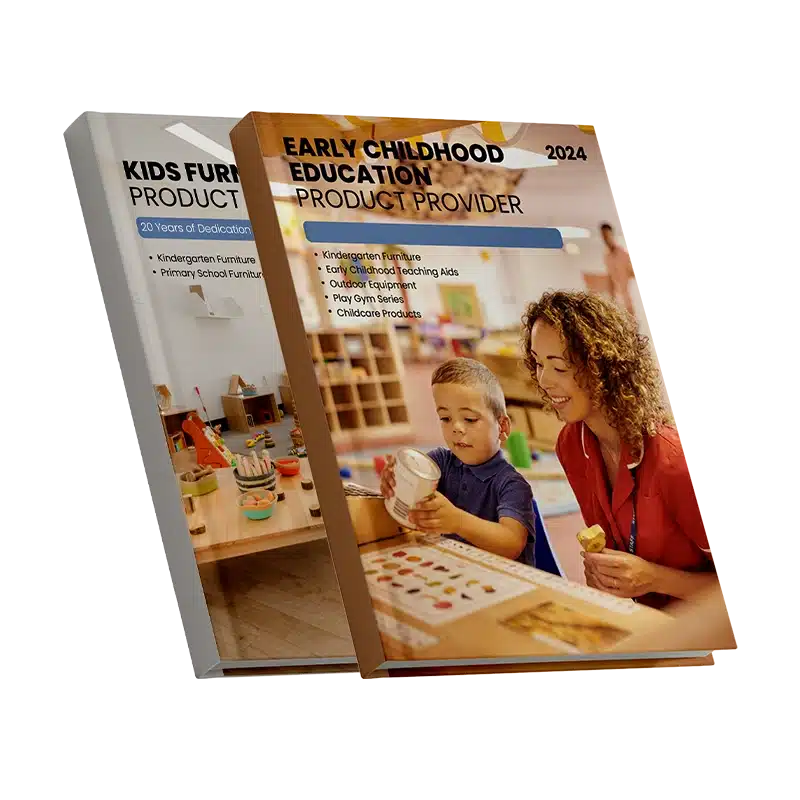
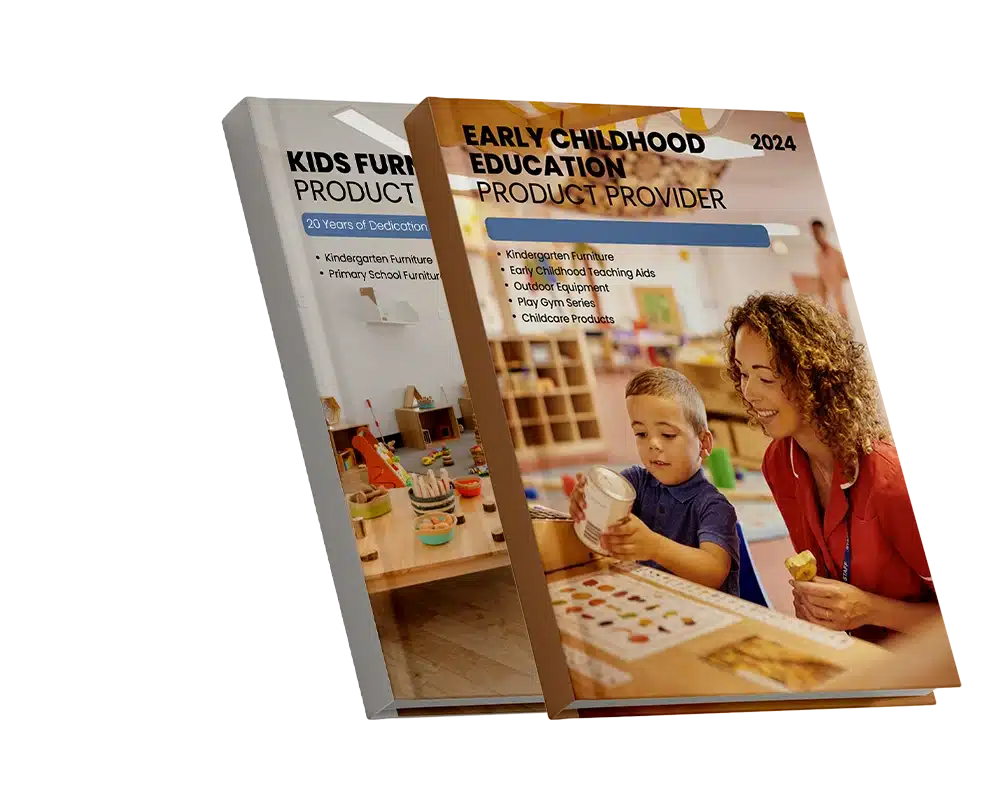
FAQs about Literacy Activities for Preschoolers
- What are some easy literacy activities for preschoolers at home?
Simple activities like reading aloud, singing alphabet songs, tracing letters in sand, and playing rhyming games are excellent ways to introduce literacy at home. These hands-on and playful methods make learning fun and approachable. - How can parents be involved in literacy activities for preschoolers?
Parents can read with their child daily, play letter games, sing songs, and involve children in conversations and storytelling. Sharing home-based literacy experiences strengthens the school-to-home connection and reinforces classroom learning. - Can literacy activities for preschoolers be play-based?
Absolutely! In fact, play-based literacy activities are the most developmentally appropriate. Games like storytelling with puppets, alphabet scavenger hunts, or pretend reading sessions make learning enjoyable and effective. - How often should preschoolers engage in literacy activities?
Ideally, literacy activities for preschoolers should be incorporated daily. Short, consistent sessions of 10–15 minutes spread throughout the day yield better engagement and retention than longer, occasional lessons. - How can I support a preschooler who struggles with literacy activities?
Provide extra support through visual aids, simplified instructions, and multisensory tools. Celebrate small successes, and offer varied activities to meet different learning styles. Patience and encouragement are key. - Are group literacy activities for preschoolers effective?
Yes, group activities encourage collaboration, listening, and language use in social contexts. Circle-time story sharing, rhyming chants, and interactive games foster both literacy and social development.
Conclusion
Helping preschoolers build strong literacy skills starts with intention, creativity, and the right tools. Through engaging, play-based approaches, children can explore letters, sounds, stories, and vocabulary in ways that feel exciting and age-appropriate. As this article has shown, literacy activities for preschoolers don’t have to be complex—just meaningful, consistent, and fun.
To make this journey even easier, Xiha Montessori offers a wide range of educational toys specifically designed to support early literacy development. Their carefully crafted resources—ranging from alphabet manipulatives to phonics puzzles—encourage hands-on learning and support a variety of literacy goals in both classroom and home settings. Explore Xiha Montessori’s collection and bring joyful, purposeful literacy learning to life.



